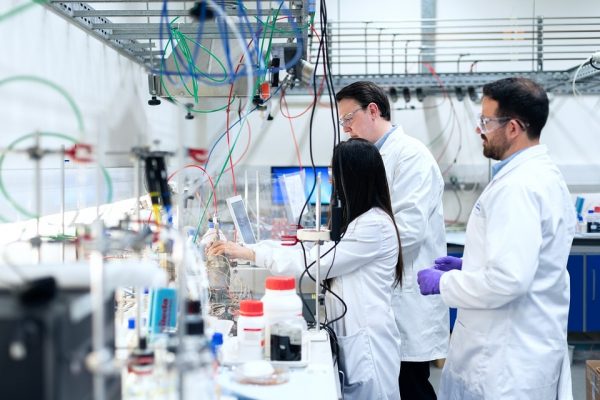Chemical manufacturing involves working with various substances, including some that can be very dangerous. These chemicals can react strongly or be toxic, which means safety is super important for workers, the environment, and people living nearby.
Investing in safety isn’t just about protecting your employees; it’s about protecting your company’s future. You may wonder how. When workers feel safe, they are more productive and more committed to their roles. It’s a win-win situation.
So, let’s explore how investing in workforce safety can lead to more effective operations.
Table of Contents
Key Areas for Investment in Workforce Safety
Safety Equipment for Workers
Safety equipment is essential for protecting workers in chemical manufacturing. This shields them from dangerous chemical exposure, physical hazards, and other workplace risks. It’s crucial to choose the right type of gear for specific tasks to ensure maximum protection.
For example, consider investing in blue nitrile gloves, which resist many types of chemicals and provide a good grip. These gloves are particularly well-suited for industrial settings involving chemical management, handling hazardous substances, or operating machinery.
Along with that, workers often need full personal protective equipment (PPE) kits, which might include goggles, face shields, and protective suits. These kits are crucial for comprehensive protection, especially when dealing with highly reactive or toxic chemicals.
Selecting the appropriate equipment involves more than just picking out gear. It’s important to make sure that each piece fits well and is comfortable enough for workers to wear throughout their shifts.
Training and Education
Training and education are essential for maintaining safety in chemical manufacturing. Both new and experienced workers need comprehensive training programs to understand the risks and the necessary precautions for their jobs.
Firstly, it’s important for all workers to receive initial training when they join. But learning shouldn’t stop there. As processes change and new hazards emerge, ongoing education is crucial. It ensures everyone is up-to-date on the latest safety procedures.
Remember, consider investing in specialized training for specific tasks. Some machines or chemicals require particular handling skills. By providing targeted training, companies ensure that workers are competent and confident in using equipment or handling materials, which significantly reduces the risk of accidents.
Engineering Controls
Engineering controls play a crucial role in keeping workplaces safe, especially in industries like chemical manufacturing, where hazards are common. These controls involve modifying equipment or processes to reduce risks.
For example, ventilation systems help remove dangerous fumes from the air, making the environment safer to breathe. Similarly, by isolating hazardous processes in separate areas or using automated equipment, you can drastically reduce the chance that workers will come into contact with dangerous substances.
Investing in these technologies might seem costly at first, but the long-term benefits are significant. With better engineering controls, the risk of accidents and health issues decreases markedly. This helps to avoid costly downtime and enhances overall productivity.
The Return on Investment (ROI) of Safety
Investing in workplace safety isn’t just the right thing to do; it also makes good business sense. Here’s how prioritizing safety can directly benefit your company:
Reduced Costs
When a company invests in safety, it can avoid many costs associated with workplace accidents. These include medical expenses for injured employees, lost productivity when workers are absent, and high insurance premiums. However, when a rigorous safety program is implemented, these costs can be reduced. This shows that spending on safety measures can actually save money in the long run.
Increased Productivity
A safe work environment boosts employee morale. When workers feel secure, they are more engaged and focused, leading to better work performance and higher-quality products. It’s simple: employees who aren’t worried about their safety can concentrate better on their tasks, leading to greater efficiency and output.
Enhanced Reputation
A strong safety record improves a company’s reputation, making it more attractive to potential employees, customers, and investors. Companies known for their commitment to safety are seen as responsible and reliable, which can lead to more business opportunities.
Implementing a Comprehensive Safety Program
Risk Assessment
Conducting regular risk assessments is vital for any chemical manufacturing plant. This helps identify and prioritize potential hazards that could harm workers. By understanding the risks, you can take steps to prevent accidents before they happen. I
Compliance with Regulations
Staying compliant with legal and regulatory requirements is not just about avoiding fines; it’s about protecting people. You must follow strict safety laws designed to prevent accidents and protect the environment. Keeping up-to-date with these regulations is crucial. You can do this by attending industry workshops and working with legal experts who specialize in chemical safety.
Final Words
Investing in workforce safety isn’t just about rules; it’s about caring for the people who work there. By investing in better equipment and training, you show you value your workers. This makes everyone feel more secure and proud of what they do.
